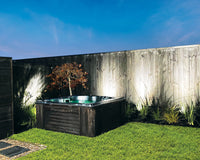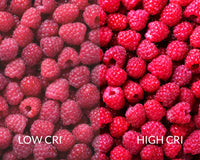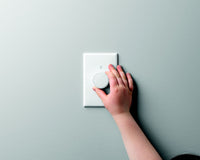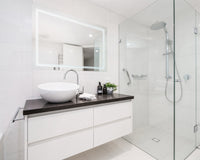Article Author: Wattson All-Lights
Having the right lighting is so important for creating a safe, comfortable, and energy-efficient space. In New Zealand, there are specific safety standards for lighting design to ensure that every area is well-illuminated. This guide is here to help you figure out the appropriate lumens needed to achieve effective lighting while staying in line with New Zealand's regulations.
Understanding Lumens and Lux
First things first: understand the latest lighting terminology.
The industry has largely transitioned to LED lighting. But what if you haven't made the switch, or if you're unfamiliar with key measurements? There are two basic concepts to grasp when it comes to illuminating a space: lumens and lux.
- Lumens: quantify the total amount of visible light emitted by a source, indicating how bright a fixture (or "luminaire") is. This information is typically found on a manufacturer's specification sheet.
- Lux: On the other hand, measures illuminance, which refers to the amount of light that reaches a surface per square metre.
Although lux and lumens are closely related, they serve different purposes. While lumens measure the total light emitted by a source, lux measures the amount of light that actually illuminates a surface. To put it simply, one lux equals one lumen per square meter.
To determine the number of lumens needed for a room, multiply the desired lux level by the area of the room in square metres.
Recommended Lighting (Lux) Levels for Various Activities
The New Zealand Building Code outlines the minimum lighting requirements to ensure safety and functionality. While these standards serve as a baseline, achieving higher lighting levels is often essential for comfort and specific tasks.
In addition to the minimum requirements, the following illuminance levels are recommended for different household activities:
- General Household Activities (e.g., vacuuming, washing): 150–200 lux
- Focused Activities (e.g., reading, studying, working on a car): 300–500 lux
- Concentrated Activities (e.g., fine detail sewing): 800–1,000 lux or more
These recommendations ensure that there is sufficient lighting for safety and comfort during various tasks.
Calculating Lumens for Your Space
To determine the total lumens required for a room, follow these steps:
- Calculate the room's area by multiplying its length by width to get the area in square meters.
- Select the Appropriate Lux Level based on the primary activity of the room.
- Multiply the room's area by the selected lux level.
Example: For a 20-square-meter living room primarily used for general activities:
- Area: 20 square meters
- Recommended Lux Level: 150 lux
- Total Lumens Needed: 20 m² × 150 lux = 3,000 lumens
This calculation indicates that to achieve 150 lux throughout the room, a total of 3,000 lumens is necessary.
Additional Considerations
- Surface Reflectivity: Did you know that the colours and finishes of surfaces can dramatically change the lighting in a room? Surfaces that are lighter in colour or boast a glossy finish work like mirrors, bouncing light around and brightening the space. This not only creates a more inviting atmosphere but can also reduce the number of light fixtures you need to illuminate the area. So, if you're looking to create a brighter, more vibrant home without the extra energy cost, consider embracing those reflective surfaces!
- Age of Occupants: As we age, our vision often changes, which means older individuals may need brighter lighting to see clearly while doing similar tasks. Ensuring adequate lighting can make a world of difference in maintaining comfort and functionality in daily activities!
- Task Duration: When it comes to lighting, it’s interesting to note that short-duration tasks often don’t require as much brightness as those lengthy activities we tackle over time. Whether you’re working on a quick project or settling in for a marathon work session, adjusting the light can make all the difference!
Types of Lighting
Incorporating a variety of lighting types can significantly enhance a space's functionality and ambiance. While the following categories serve as a foundational guide, it is essential to consider each environment's unique needs.
- General Ambient Lighting: This type provides overall illumination for a space, ensuring clarity and visibility throughout. It typically involves ceiling-mounted fixtures, chandeliers, or recessed lighting, creating a uniform glow that can make a room feel more open and inviting.
- Task Lighting: Focused on illuminating specific areas where activities requiring higher levels of brightness take place, task lighting is crucial for functionality. Examples include desk lamps for reading or working, under-cabinet lights in kitchens to aid in food preparation, and vanity lighting in bathrooms for grooming. The goal is to reduce eye strain and enhance performance in designated areas.
- Accent Lighting: is used to highlight decorative features or architectural elements, adding visual interest and depth to a space. Common sources include wall sconces, track lighting, and spotlight fixtures directed at artwork or architectural details. Accent lighting creates focal points and can dramatically change the atmosphere by adding layers of light and shadow.
By thoughtfully combining these various lighting types, you can create a well-balanced environment that meets both aesthetic desires and practical needs.
Outdoor Lighting
Don’t forget outside! Sufficient lighting plays a vital role in outdoor spaces, ensuring safety along pathways and at entrances, helping to illuminate potential hazards and guide visitors. However, when lighting becomes excessive, it can produce harsh glare, disturb neighbouring properties, and exacerbate light pollution, obscuring the night sky's beauty. Striking a harmonious balance between the necessity for safety and the imperative of environmental stewardship is essential for creating inviting and responsible outdoor environments.
Consider installing control gear such as sensors and timers so that you only use light when you need it, saving on power and minimising neighbour disturbance.
Final Comments
Effective lighting design improves safety, comfort, and energy efficiency. By understanding lumens, lux, and your space's unique requirements, you can create an environment that satisfies both legal standards and personal preferences.
Thanks for reading, check out other articles by me in my blog. If you have any questions about this article, please contact our team who are always happy to answer any questions and help provide recommendations.
- Email: info@eurotechlighting.co.nz
- Phone: 0800 688 229
Signing off for now













